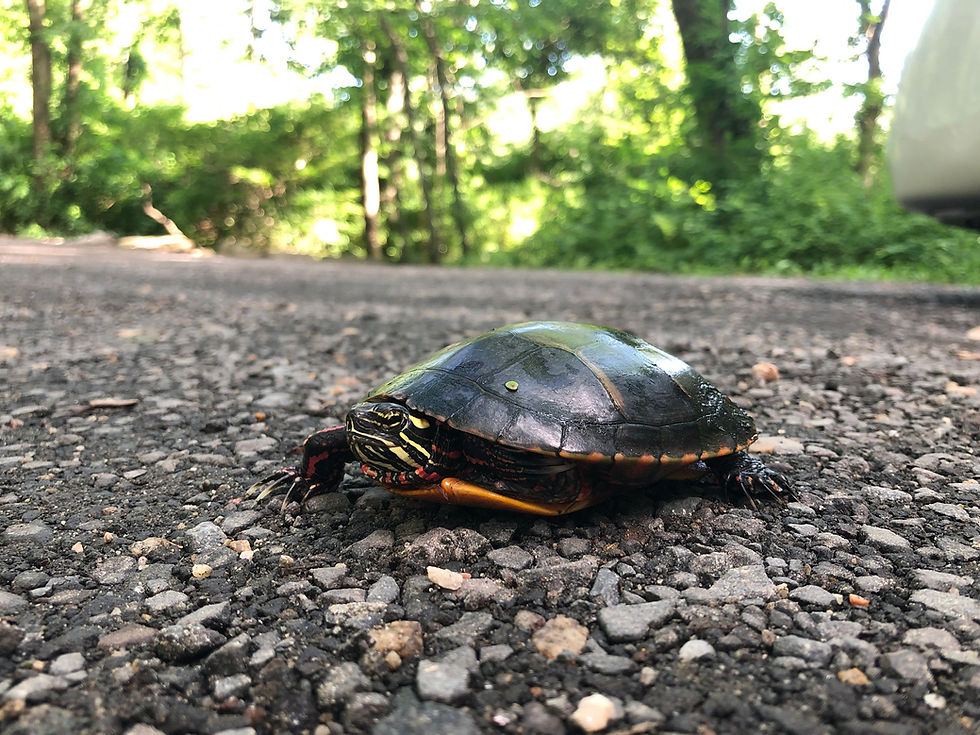Invertebrates in Winter

By Jennifer Meikle, Environmental Educator
Spotting an invertebrate in winter (that didn’t sneak into your house) can be a rare sight! An invertebrate is an organism without a backbone. Instead of an internal skeleton, most have an outer exoskeleton that gives them support and protection. Invertebrates include (but aren’t limited to) insects, arachnids (like spiders), crustaceans (like crabs), mollusks (like snails), and worms.
Like many people, you might think that the cold temperatures kill most of these tiny creatures. But year after year, their populations remain relatively stable, which means that somehow, they do find a way to make it through. While some are killed by temperature drops, they do have many ways of surviving the winter season. There may be more going on in the world of bugs than you think.
What an invertebrate does in winter greatly depends on their species. Some survive a cold winter by migrating to warmer climates. Monarch butterflies and birds are great examples of this. Some Monarchs travel as far as 2,000 miles to make it to their overwintering spots in central Mexico. Some moths and crop pests are also known for migration. Excluding pests, migratory insects can be important pollinators for crops and other plants on their journey south.
Another way invertebrates stay alive in winter is by overwintering. Some do this by finding a cozy warm place to hang out under leaf litter or fallen logs, like the Wooly Bear Caterpillar. Others remain active by burrowing underground below the frost line (ants and termites). There are even insects and spiders that stay active both under and over the snow in winter. These invertebrates (spiders and the Snow Fly for example) produce glycerol in their body fluids that prevents them from freezing. This is their bodies’ natural version of “antifreeze,” and it helps them tolerate super cold temperatures.
Some invertebrates will hibernate for the winter, like bears. Some do it as larvae, others as adults. They will burrow somewhere well protected and warm like under loose tree bark until it warms up again. This is common with beetles, flies, and ladybugs. Ladybugs often prefer to hibernate with their friends in a group to help keep extra warm. Invertebrates like ladybugs and stinkbugs also tend to seek warmth in places like your house or attic to overwinter. The best thing to do if you find an active invertebrate in your home is to relocate them to a cooler part of your house like the garage, or a sheltered place outside.
Try to take notice of any invertebrates around you in winter, even if it’s only the spider in your attic!
Citations:
https://naturallycuriouswithmaryholland.wordpress.com/category/insects-active-in-winter/
https://www.ecocarepest.com/where-do-bugs-go-in-the-winter/
https://www.fs.fed.us/wildflowers/pollinators/Monarch_Butterfly/migration/index.shtml
https://www.prevention.com/life/a34551524/what-happens-to-spiders-in-winter/
https://4njpest.com/complete-list-of-hibernating-insects/
https://biologydictionary.net/invertebrate/





